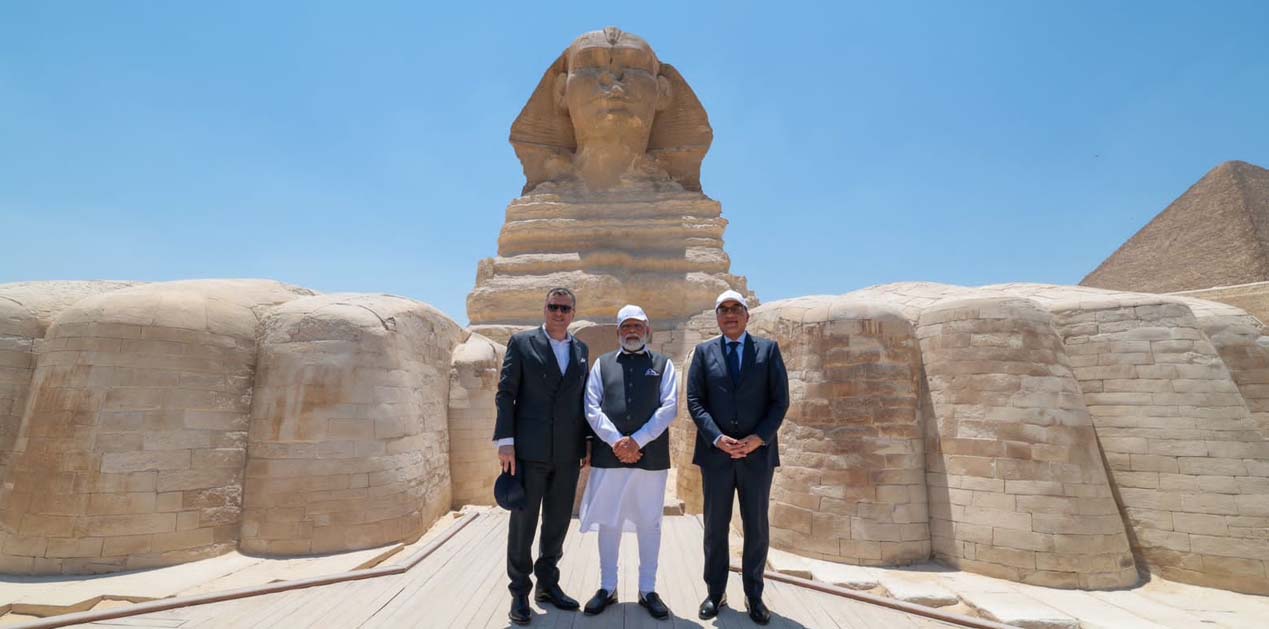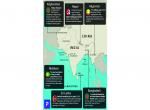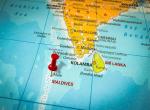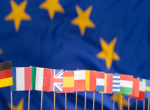Setting the Context
On July 15, 2023, Prime Minister Narendra Modi visited the United Arab Emirates (UAE), the fifth visit to the UAE in last eight years. This visit was preceded by his visit to the Republic of France as the guest of honour for the July 14 (Bastille Day) celebration and to the Arab Republic of Egypt on June 25 as a state guest, which was considered 'historic' as the relations between the two nations were elevated to a strategic partnership. One cannot miss the symbolism of these back-to-back state visits and the resulting growing ties with the four countries, which share maritime space and now have strategic partnerships with.
The maritime space that the four countries share is a part of the larger domain that stretches from the Indian Ocean to the Pacific Ocean - the Indo-Pacific, which has found a strong resonance in the global security discourse, and more specifically in the Asian security lexicon.[1] Though countries have no consensus and with varied definitions, the region generally stretches from the coast of east Africa to the eastern end of the Pacific.
The western Indo-Pacific region which covers the western and central portions of the Indian Ocean[2] is the realm wherein the four countries in consideration- India, the UAE, France, and Egypt are located in. With a shared strategic vision for a regional security, France, India and the UAE are already engaged in a trilateral partnership, based on cooperation in the field of defence, technology and energy. This article discusses the possibility of upgrading this trilateral partnership to a ‘Quadrilateral’ by including the geostrategically located country – Egypt.
India - France - UAE Trilateral Partnership
Paralyzed by internal fissures, the existing multilateral forums and institutions have been unable to address the multitude of challenges, thus effectively forcing the nations to engage in innovative minilateral coalitions to tackle their shared transnational concerns. As illustrated by groupings, such as the Quadrilateral security dialogue between Japan, India, Australia and the USA, and the Israel-India-United Arab Emirates-United States “I2U2”; the trilateral cooperation between France, the UAE and India brings three middle powers together, forming a common front against common challenges without being bound to formal structures.
Catherine Colonna of France, Dr. S. Jaishankar of India, and Shiekh Abdullah bin Zayed Al Nahyan of the UAE; the three Foreign Ministers met for the first time in a trilateral format on the sidelines of the U.N. General Assembly in New York in September 2022. The announcement to form a new trilateral partnership soon followed in February next year with an aim of expanding cooperation in various fields of mutual interest and the shared desire to promote international stability and prosperity. Indian External Affairs Minister, Dr. S. Jaishankar stated that the collaboration with the other two countries will be in the field of education, business, maritime, culture and green energy for a stable peaceful and prosperous Indo-Pacific.[3]
The three countries acknowledged that defence is an area of close cooperation and thus efforts will be undertaken to further promote compatibility, and joint development and co-production, whilst seeking out avenues for further collaboration and training between the three countries’ defence forces.[4]
The Trilateral in the Western Indo-Pacific
A major conduit for international trade especially in energy with almost 90,000 vessels in the world's commercial fleet transporting 9.84 billion tons per year, and with 40% of world's oil supply and 64% of oil trade; the Indian ocean is located at the crossroads of global commerce connecting major engines of international economy the Atlantico-Mediterranean and the Indo-Pacific regions.[5] This makes India a major stakeholder in ensuring the safety and security of this stretch of the Western Indo-Pacific region.
France, the only European country to have a well-articulated Indo-Pacific strategy, is a resident power in the Western Indo-Pacific region owing to its overseas departments and regions of La Réunion and Le Mayotte, with almost 1.5 million French citizens, 8,000 French soldiers, and two territories' Exclusive Economic Zone. Besides that, it has a naval base in its former colony Djibouti located in the horn of Africa, facing the maritime chokepoint of Bab-al-Mandeb, thus ensuring itself a strategic position in the Red Sea region and East Africa, safeguarding the country's interests and providing constant surveillance of the Sea Lanes of Communication (SLOCs) on the backdrop of bulk of French energy imports transiting though this region. [6]
UAE's 'string of ports' strategy, under which it controls five ports on the west bank of Red Sea, namely in Eritrea, Somaliland, Puntland, Somalia and six ports in Yemen along with its de facto control of the strategically located island of Socotra have positioned itself as a strategic player in the Western Indo-Pacific region.
Owing to the shared interests of safeguarding their respective trade and thereby, protecting the Sea Lanes of Communication, the strategic locations at which the three countries have positioned themselves turns out to be the major binding force for the Trilateral.
Egypt: the Fulcrum State
“Egypt’s geostrategic location acts as a connecting link between Africa, West Asia, the Mediterranean, and Europe and is also an important country from the Indo-Pacific point of view.”[7]
Starting with the Assyrian, Persian, Roman and Arab occupations, to French and finally British invasion, there has been plenty of evidence in history of the tussle to control this centrally located gatekeeper to both, the West, and the East. This centrality of Egypt is due to its proximity to the Red Sea. It is the economic artery of the world since the time of Roman trade with India connecting the Mediterranean Sea to the Indian Ocean; the Red Sea is located between two strategic maritime chokepoints namely the Suez Canal in the North and Bab-al-Mandeb in the South. With 10% of all global trade passing through its waters, the volume of trade passing through this narrow stretch is expected to grow more than fivefold, from $881 billion to $4.7 trillion by 2050.[8] It is a highly strategic arena for international and regional actors and a critical zone for armed conflicts, military entanglement and great power competition and projection[9] and thus the waterway in right sense can be called the 'modern day Nile' of the world.
The seamless flow of this modern day Nile can however be obstructed at three cataracts (as opposed to 6 cataracts on the river Nile) namely - the Gulf of Aden, the Bab-al-Mandeb and the Suez Canal, all vital chokepoints which can disturb international commerce. The blockade of the Suez Canal (Ever Given ship episode), outbreak of civil wars and chaos in Sudan and in Yemen and the potential of Somali piracy resurfacing are the major security threats which can not only disturb the international commerce but will have spillover effects in the Mediterranean in the North and the Indo-Pacific in the south[10] as well as other countries in the region particularly Egypt.
Egypt's economy and the country's international reputation is dependent upon the uninterrupted flow of cargo ships transiting through the Suez Canal and thus Egypt has always considered conflict in the Red sea as a threat to the maritime security of the entire region. [11] The canal represents around 5% of GNP and 10% of GDP and is Egypt's most important source of securing hard currency.[12] Thus, Egypt will be willing to cooperate with the regional powers if that would help in preserving its steady source of income. [13] Here the trilateral partnership of France, India and the UAE possess a ray of hope to Egypt, because of strong bilateral partnerships and converging national interests.
Three Possible Pillars of Cooperation under the Quadrilateral Format
Maritime Security
Given the presence of India, France and the UAE at strategic locations in the Western Indo-Pacific as discussed earlier, Egypt’s participation to form a Quadrilateral from a maritime arch of cooperation of the four strategically located countries against shared security threats would be a positive step. Egypt is geographically central to Africa, Europe and Asia with the largest armed forces in both Africa and the Middle East[14] and a modernised blue water fleet in the Red Sea. Its military presence in the region could be further strengthened by cooperating with the three navies and ensuring a smooth flow of international commerce. The trilateral of India, France and the UAE carried out their first edition of maritime partnership exercise in the Gulf of Oman with an aim to enhance trilateral cooperation between the three navies to ensure safety of mercantile trade and freedom of navigation at high seas in the region along with measures towards addressing traditional and non-traditional threats.[15] Bilaterally, Egypt has also been involved in joint military exercises with all the three countries of the trilateral – Cleopatra maritime exercises with France, Joint Training exercise Cyclone-I with India, and Zayed military exercises with the UAE. Egypt joining the trilateral maritime partnership exercises would further strengthen its own navy and develop interoperability between the three navies thereby contributing to the security of the Red Sea region and international Sea Lanes of Communication. To start with, under the banner of a Quadrilateral, the four navies could cooperate in data and intelligence sharing as also for joint training in different scenarios of humanitarian and combat missions.[16]
Economic Cooperation
Egypt is undergoing a profound economic crisis which although stretches back some years, had been accelerated when COVID-19 hit the country in 2020 and then due to the repercussions of Ukraine war that started in 2022. As foreign investments outside oil and gas sector are meagre, Egypt's three major source of income - labour remittances, tourism and Suez Canal revenue which play a major role, were all affected resulting into dwindling foreign reserves which were already falling due to the outflow of Foreign Portfolio Investments (FPI). With the subsequent depreciation of the Egyptian pound and Egypt's import dependence on food grains, particularly wheat have led to spike in inflation which reached 31.9% and food prices rose by 61.8%.[17] Egypt’s dire need for foreign investment can be satisfied by the three nations working under the Quadrilateral.
France has been a major investing partner in Egyptian government's infrastructure projects. With 4.6 billion Euros of total investment, 800 million Euros are in government loans, 1 billion Euros from AFD, the French development agency, and 2 billion Euros in bank loans guaranteed by French state.[18] Apart from investments, French companies have executed mega projects namely - the Cairo Metro construction project, the Nilesat Satellite launch project, mobile network installation and the thermal power state construction project.
PM Narendra Modi’s recent visit saw Egypt announcing a dedicated slot for India within the Suez Canal Economic Zone (SCEZ) as a prime investment prospect for Indian manufacturers from power, steel, chemicals, and agriculture equipment industries which have expressed interest in setting up projects in the dedicated zone in addition to Indian private sector companies that have already undertaken significant projects in the country. There are plans to push the bilateral trade from currently $7 billion to $12 billion in next five years.
With Egypt-UAE Joint Strategic Investment Platform launched in 2019, the UAE leads the Arab region in investments in Egypt with $28 billion invested in first quarter of 2023 and further aims to increase it to $35 billion over the next decade in several sectors including tourism, education, food, industries, pharmaceuticals, clean and renewable energy, aviation, logistics, and transportation with currently 3,000 Emirati companies operating in various sectors.[19]
Given Egypt’s geostrategic importance and need for foreign investments, the quadrilateral partnership between the four would be able to facilitate these initiatives in an institutionalised manner.
Cooperation in Climate Change Initiatives
According to Swapna Panickal, a meteorological scientist at the Indian Institute of Tropical Meteorology - "The Indian Ocean is warming at a higher rate than the other oceans around the world".[20] With an annual sea level rise of 3.7 mm, the Indian Ocean region, according to Intergovernmental Pannel on Climate Change (IPCC) report, will have to face potential disasters in coming decades, with an existential threat to a number of island states in the region and costal port towns.[21] In this context, another area of joint quadrilateral cooperation would be to tackle climate change in the region. The trilateral has been already cooperating to promote design and execution of projects in the field of renewable energy with focus on solar and nuclear energy. All the four countries have been part of the India-France led International Solar Alliance and thus the Quadrilateral cooperation of these four member states can lead the solar projects in their respective countries more effectively. A clean source of energy which emits only water vapour leaving no residue in air, green hydrogen can be used as fuel in cars, airships and spaceships thereby critical for decarbonising carbon intensive industries. India has planned to invest $8 billion to jointly develop with Egypt green hydrogen in the Suez Canal. With a similar initiative on the Indo-French side - the Indo-French roadmap on development of green hydrogen and Indo-Emirati side, the four countries can cooperate in joint development of green hydrogen benefiting from investments, technology transfer and expertise from each other.
In the field of biodiversity protection in the Indian Ocean region, the UAE-led ‘Mangrove Alliance for Climate’ with India, France and Egypt as members could provide an effective platform in countering the alarming sea level rise of the Indian Ocean. The Red Sea levels have been noticeably rising at a faster rate of 6.40 mm/year[22] than the average of the Indian Ocean region as mentioned earlier. Egypt, the COP27 host country, has thus been working towards a mangrove revolution, prioritising its climate projects. Collaborating with Mangrove Alliance for Climate and Indian Ocean Rim Association, the Quadrilateral would be better suited to tackle not only their respective national threats emanating from sea level rise but also would be able to help the Small Island Nations of the Indian Ocean with their expertise in the field. Often regarded as the world's "last coral refuge"[23] Egypt's experience in conservation of the Red sea heat resilient shallow water corals can help the Quadrilateral further to strengthen its goal of protecting the biodiversity of the Indian Ocean.
With agriculture accounting for 28% of all jobs in Egypt, desertification poses a major challenge to the country's economy as it reportedly loses 3.5 acres of fertile and limited agricultural land every hour.[24] The Trilateral is already working in the field of desertification and food security under International Year of Millet 2023 and with Egypt’s inclusion in the partnership the country can gain the knowhow and technology of drought resistant agriculture. PM Modi announced the Mission LiFE at UNFCCC COP26 to replace the 'use-and-dispose' economy with circular economy and nudging individuals to undertake simple acts in their daily lives contributing to climate change. The proposed quadrilateral could cooperate under the aegis of the mission to achieve their respective climate goals.
Conclusion
In the contemporary multipolar world, as middle powers increasingly shape international affairs, minilateralism has become a preferred approach to solve shared issues, and as rightly pointed out by India's External Affairs Minister Dr. S Jaishankar "it (minilateralism) is the way forward for many countries". As minilateralism is cooperation based on shared challenges and interest and not on shared values or ideological alignment, nations are able to collaborate on mutually critical issues without having to agree on everything or hold the same world view as the other partners. Apart from tending to shared challenges, the flexible minilateral format allows countries to build stronger relationships rather than being forced to work within the framework of larger, less cohesive multilateral groups.[25] In this context, the proposed quadrilateral should be strengthened firstly, by respecting the strategic autonomy of each member state to pursue its national interests and adopt its preferred foreign policy without being constrained in any manner by other states;[26] and secondly by strengthening cultural and people-to-people connection between each member state by undertaking joint projects and heritage promotion and protection. India, France, the UAE and Egypt, the four middle powers can thus come together under the banner of a quadrilateral on the basis of their converging interests and work out effective solutions for common challenges.
References
[1] S. Lawale & T. Ahmad (2022), “UAE-India-France Trilateral: A Mechanism to Advance Strategic Autonomy in the Indo-Pacific?”, Asian Journal of Middle Eastern and Islamic Studies, DOI: 10.1080/25765949.2021.2024401| Accessed July 15, 2023
[2] M. Spalding, “Marine Ecoregions of the World: A Bioregionalization of Coastal and Shelf Areas”, BioScience, Volume 57, Issue 7, July 2007, Pages 573–583, https://doi.org/10.1641/B570707
|Accessed July 20, 2023
[3] S. Jaishankar, “Discussed convergences and further collaboration in education, business, maritime, culture and green energy for a stable peaceful and prosperous Indo-Pacific”, February 04, 2023, Tweet | Accessed July 10, 2023
[4] Statement of the Government of the French Republic, the Government of the Republic of India and the Government of the United Arab Emirates on the Establishment of the Trilateral, (mea.gov.in) | Accessed July 2, 2023
[5] D. Jaishankar, “Indian Ocean Region: A Pivot for India’s Growth.”, Brookings, September 12, 2016| Accessed July 20, 2023
[6] S. Lawale & T. Ahmad (2022), “UAE-India-France Trilateral: A Mechanism to Advance Strategic Autonomy in the Indo-Pacific?”, Asian Journal of Middle Eastern and Islamic Studies, DOI: 10.1080/25765949.2021.2024401| Accessed July 15, 2023
[7] C. Solomon, “Why India is expanding its strategic ties with Egypt”, February 01, 2023, (newarab.com) | Accessed on July 16, 2023
[8] https://gulfif.org/securing-the-bab-el-mandeb-can-threats-to-the-red-sea-drive-regional-cooperation/
[9] H. Kuperman, “Securing the Bab-el-Mandeb: Can threats to the Red Sea drive regional cooperation?”, Gulf International Forum, (gulfif.org) | Accessed July 16, 2023
[10] K. Alexander, “A changing balance of power in the Red Sea”, Gulf International Forum, (gulfif.org) | Accessed July 17, 2023
[11] K. Alexander, “A changing balance of power in the Red Sea”, Gulf International Forum, (gulfif.org) | Accessed July 17, 2023
[12] E. Kenawy, “The Economic impacts of the New Suez Canal”, European Institute of the Mediterranean, Yearbook 2016, | Accessed July 25, 2023
[13] K. Alexander, “A changing balance of power in the Red Sea”, Gulf International Forum, (gulfif.org) | Accessed July 17, 2023
[14] J. Stork, "Egypt’s Military," Middle East Report 107 (July/August 1982) | Accessed July 24, 2023
[15] “Maiden India-France- UAE Maritime Partnership Exercise”, Press Information Bureau, June 08, 2023, (pib.gov.in) | Accessed July 02, 2023
[16] C. Rajamohan, “Egypt, France and India can help to spread security from the Mediterranean to the Indo-Pacific”, August 26, 2022, War on the Rocks | Accessed July 10, 2023
[17] “Egypt in the Balance?”, International Crisis Group, May 31, 2023, (crisisgroup.org) | Accessed July 23, 2023
[18] M. Mandour, “The Cairo Paris Axis, Carnegie Endowment for International Peace”, January 21, 2022, (carnegieendowment.org) | Accessed July 10, 2023
[19] M. Mandour, “The Cairo Paris Axis, Carnegie Endowment for International Peace”, January 21, 2022, (carnegieendowment.org) | Accessed July 10, 2023
[20] A. Gargeyas, “Climate Change is the biggest threat to Indian Ocean Security”, Takshashila Institution, (takshashila.org.in) | Accessed 20, 2023
[21] A. Gargeyas, “Climate Change is the biggest threat to Indian Ocean Security”, The Diplomat, August 31, 2021, (thediplomat.com) | Accessed 20, 2023
[22] C. Abudulla, “Is the Red Sea sea Level rising at a faster rate than the global average? An Analysis based on satellite Altimetry Data”, September 02, 2021, https://doi.org/10.3390/rs13173489 | Accessed July 20,2023
[23] “The Immense reef of the red sea that could become the last coral refuge in the world”, Africa news, (africanew.com), | Accessed July 20, 2023
[24] M. Salem, “The United Nations: Egypt is the first in the world in terms of desertification, losing 5 agricultural acres every hour”, June 18, 2011, (almasryalyoum.com) | Accessed July 23, 2023
[25] N. Mladenov, “Minilateralism: A concept that is changing the World Order, Washington Institute for Near East Policy”, April 14, 2023, (washingtoninstitute.org) | Accessed July 24, 2023
[26] “Aravind Devananthan asked: What is ‘strategic autonomy’? How does it help India’s security?”, Manohar Parrikar Insitutte for Defence studies and Analysis, January 20, 2015, (idsa.in) | Accessed July 25, 2023
(The paper is the author’s individual scholastic articulation. The author certifies that the article/paper is original in content, unpublished and it has not been submitted for publication/web upload elsewhere, and that the facts and figures quoted are duly referenced, as needed, and are believed to be correct). (The paper does not necessarily represent the organisational stance... More >>
Image Source: https://twitter.com/PMOIndia/status/1672961108280487936/photo/3











Post new comment